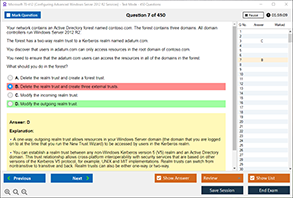Introduction
In the world of networking, switches play a crucial role in connecting devices within a local area network (LAN). Among the various types of switches, a Layer 2 switch stands out due to its specific function and importance in modern network infrastructures. As businesses and individuals continue to rely on fast and efficient networking systems, understanding the fundamental functions of a Layer 2 switch is essential for optimizing network performance.
This article will focus on one of the most significant functions of a Layer 2 switch — its role in forwarding data packets based on MAC addresses. Additionally, we will explore the importance of Layer 2 switching in improving network efficiency, minimizing network traffic, and enhancing security. By the end of this article, readers will have a comprehensive understanding of Layer 2 switches and their role in ensuring seamless communication within a network.
What is a Layer 2 Switch?
Before diving into its functions, let’s first understand what a Layer 2 switch is and how it works. In the OSI (Open Systems Interconnection) model, switches operate primarily at Layer 2, the Data Link Layer. A Layer 2 switch is a network device that connects devices within a local area network (LAN) and forwards data frames based on the MAC (Media Access Control) addresses of the devices involved.
The Layer 2 switch is designed to handle Ethernet frames and makes forwarding decisions based on the destination MAC address in the Ethernet frame header. Unlike Layer 3 switches, which operate at the Network Layer and use IP addresses to route data, Layer 2 switches rely entirely on MAC addresses to determine where to send data frames.
The Primary Function of a Layer 2 Switch: Forwarding Data Based on MAC Addresses
One of the primary functions of a Layer 2 switch is to forward data frames based on the MAC addresses of devices connected to the network. The switch builds and maintains a MAC address table (also known as a forwarding table or Content Addressable Memory (CAM) table), which contains the MAC addresses of all devices connected to the switch.
Here’s a closer look at how a Layer 2 switch performs this function:
-
Receiving Data Frames: When a device on the network sends a data frame, the Layer 2 switch receives it. The frame includes the source MAC address and the destination MAC address, along with other relevant information.
-
Checking the MAC Address Table: The switch then checks its MAC address table to find the port associated with the destination MAC address. If the destination MAC address is found in the table, the switch forwards the frame to the appropriate port.
-
Forwarding or Flooding the Frame: If the destination MAC address is known, the switch forwards the data frame directly to the corresponding port. However, if the destination MAC address is not in the table, the switch floods the frame to all ports (except the one on which it was received) in an attempt to locate the destination device.
-
Learning MAC Addresses: When the switch receives a frame, it also learns the source MAC address and the port it came from. This information is added to the MAC address table, allowing the switch to forward future frames more efficiently.
This process ensures that the Layer 2 switch can efficiently forward data to the correct destination without the need for complex routing protocols. By using MAC addresses instead of IP addresses, Layer 2 switches provide a fast and simple method for managing data within a LAN.
Other Key Functions of a Layer 2 Switch
While forwarding data based on MAC addresses is the primary function of a Layer 2 switch, there are several additional features that enhance the switch’s performance and make it indispensable in modern networks:
-
Segmentation of Network Traffic: Layer 2 switches help segment a large network into smaller, more manageable collision domains. Each port on a switch represents a separate collision domain, reducing network congestion and improving overall performance.
-
Broadcast Domain Control: Although Layer 2 switches cannot separate broadcast domains, they can manage the distribution of broadcast traffic. For instance, VLANs (Virtual Local Area Networks) can be configured on a Layer 2 switch to control which devices receive broadcast traffic. This helps minimize unnecessary broadcast traffic and increases network efficiency.
-
Loop Prevention with Spanning Tree Protocol (STP): Layer 2 switches support the Spanning Tree Protocol (STP), which helps prevent network loops by ensuring there is only one active path between two devices. STP dynamically detects and blocks redundant paths, reducing the risk of broadcast storms and network downtime.
-
Security Features: Layer 2 switches also play a role in enhancing network security. Features such as port security allow network administrators to control which devices can connect to a switch port based on MAC addresses. This helps prevent unauthorized access and strengthens overall network security.
Conclusion
In summary, the function of a Layer 2 switch is integral to the smooth operation of a network. By forwarding data frames based on MAC addresses, Layer 2 switches enable efficient communication between devices within a LAN. Their ability to learn MAC addresses, segment network traffic, and prevent loops through protocols like STP further enhances their importance in network management. Whether it’s ensuring fast data transmission, minimizing congestion, or securing network access, Layer 2 switches are essential components in building and maintaining a reliable network infrastructure.
As organizations continue to rely on networking systems for day-to-day operations, the role of Layer 2 switches will only become more critical in ensuring performance, security, and reliability. Understanding how these devices function and their additional capabilities will help network professionals optimize their network environments.
Free Sample Questions
What is the primary function of a Layer 2 switch?
A) Routing data based on IP addresses
B) Forwarding data frames based on MAC addresses
C) Securing network connections with encryption
D) Managing network traffic through bandwidth allocation
Answer: B) Forwarding data frames based on MAC addresses
What happens when a Layer 2 switch receives a data frame with a destination MAC address that is not in its MAC address table?
A) It discards the frame
B) It forwards the frame to all ports except the incoming port
C) It forwards the frame to the default gateway
D) It drops the packet and requests retransmission
Answer: B) It forwards the frame to all ports except the incoming port
Which protocol does a Layer 2 switch use to prevent network loops?
A) ICMP
B) DNS
C) Spanning Tree Protocol (STP)
D) DHCP
Answer: C) Spanning Tree Protocol (STP)



